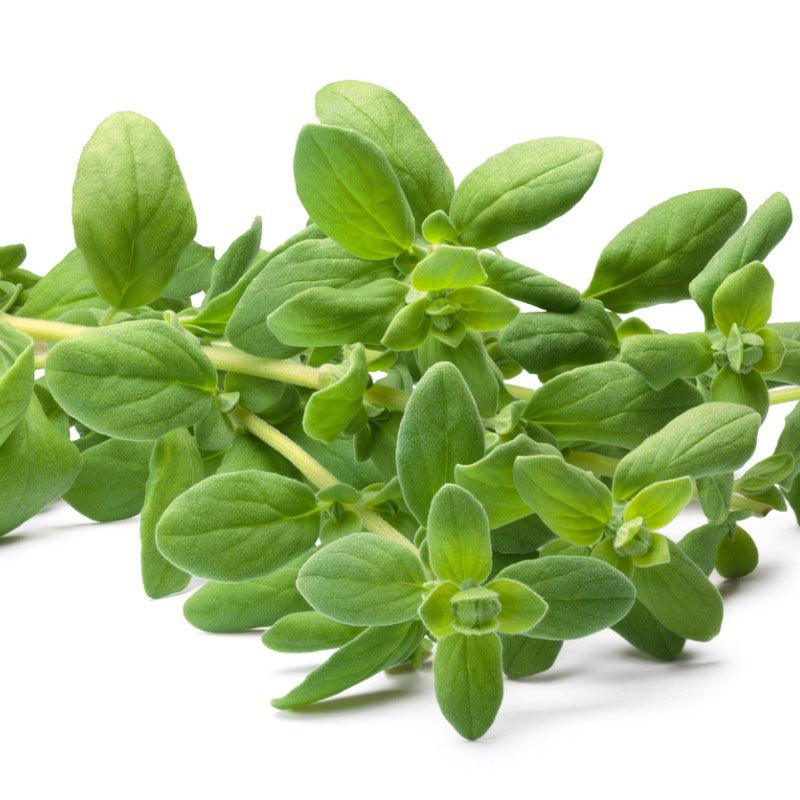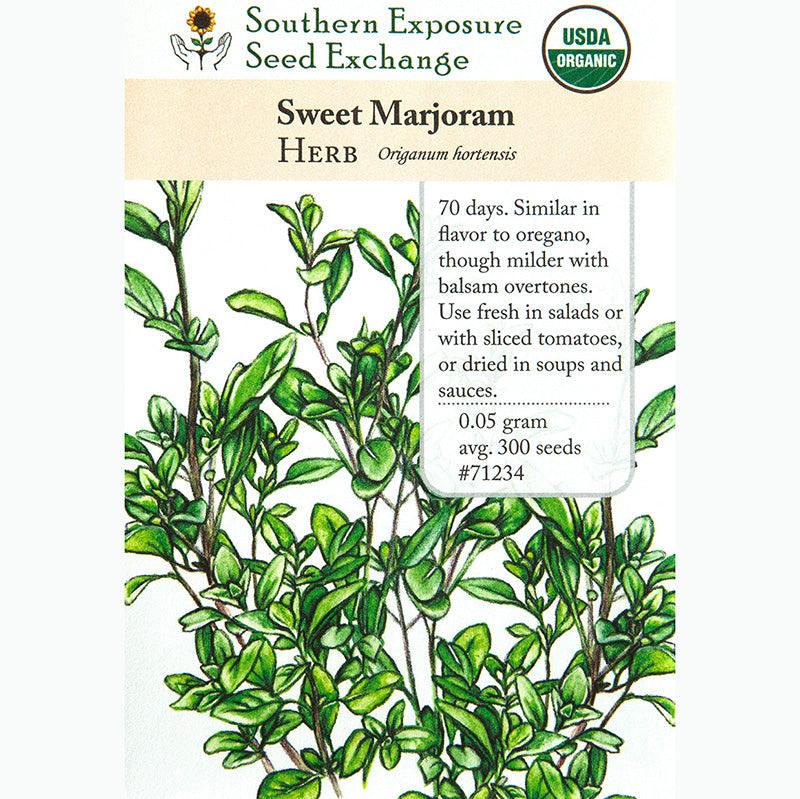Item Number: SNV2017
Sweet Marjoram Seeds (Organic)
Mediterranean Flavor Favorite
Sweet Marjoram, scientifically known as Origanum majorana, is an aromatic herb with a rich history dating back to ancient Egypt and Greece. Originating from the Mediterranean region, this herb has gained popularity globally for its culinary uses and medicinal properties.
The Sweet Marjoram plant itself presents a compact, bushy appearance, boasting small, oval-shaped, gray-green leaves densely arranged on woody stems. Delicate clusters of tiny white or pale pink flowers adorn the plant in summer, adding aesthetic appeal to gardens or herb plots.
The flavor profile of Sweet Marjoram is described as mild, yet pleasantly woodsy, with hints of floral and citrus notes. Its aromatic leaves are often used fresh or dried in various culinary dishes, ranging from soups and stews to meat marinades and vegetable seasonings.
When planting from seed, Sweet Marjoram thrives in well-drained soil and prefers a sunny location. Sow seeds in spring or early summer, covering them lightly with soil. Maintaining consistent moisture is crucial during the germination phase, which usually takes around 7-14 days. Once established, this herb requires minimal care, occasional watering, and well-draining soil to flourish.




Check Your Zone Compatibility:
Compatible with your zone.
Growing Zone for

Our Guarantee To You
Since 1976, we've served our customers at every stage of growing. Please contact us at any time. We are happy to support and assist you.
Shipping Information
Shipping Information
Shipping Weight: 0.01 lb
Dimensions: 4.5"L x 3.125"W x 0.1"H
Features
Features
- Attracts Bees/Butterflies
- Container Compatible
- Does Not Require Support
- Fragrant
- Good for Drying
- Open-Pollinated
- Requires Summer Water
Characteristics
Characteristics
Planting & Care
Planting & Care
Soil & Water: Marjoram prefers light, well-drained, moderately fertile soil with a neutral pH. Water moderately, but regularly.
Planting & Growing: Start seeds indoors 4-6 weeks before frost or sow seed directly after the last frost and when soils have reached at least 60°F. Pinch plant ends during early growth to establish bushier habit. Keep the leaves trimmed back to encourage new growth as it matures. A tender perennial in colder climates, pot up and bring indoors to overwinter.
Harvesting & Storage: Harvest leaves as desired. Leaves retain flavor well when dried; dry away from sun to preserve color and flavor, and store in an airtight container.
Useful Information
Useful Information
Guarantee
Guarantee
Share




